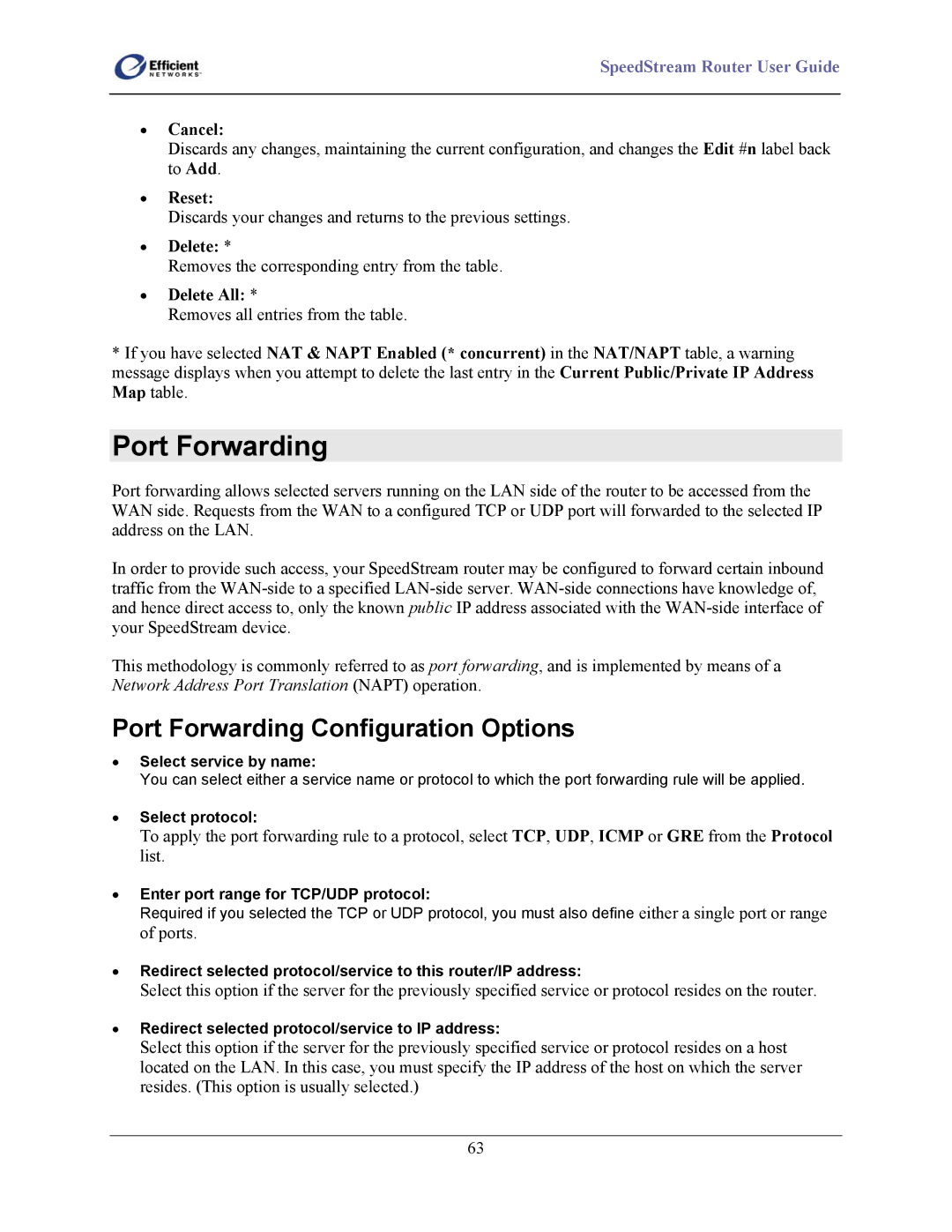
SpeedStream Router User Guide
•Cancel:
Discards any changes, maintaining the current configuration, and changes the Edit #n label back to Add.
•Reset:
Discards your changes and returns to the previous settings.
•Delete: *
Removes the corresponding entry from the table.
•Delete All: *
Removes all entries from the table.
*If you have selected NAT & NAPT Enabled (* concurrent) in the NAT/NAPT table, a warning message displays when you attempt to delete the last entry in the Current Public/Private IP Address Map table.
Port Forwarding
Port forwarding allows selected servers running on the LAN side of the router to be accessed from the WAN side. Requests from the WAN to a configured TCP or UDP port will forwarded to the selected IP address on the LAN.
In order to provide such access, your SpeedStream router may be configured to forward certain inbound traffic from the
This methodology is commonly referred to as port forwarding, and is implemented by means of a Network Address Port Translation (NAPT) operation.
Port Forwarding Configuration Options
•Select service by name:
You can select either a service name or protocol to which the port forwarding rule will be applied.
•Select protocol:
To apply the port forwarding rule to a protocol, select TCP, UDP, ICMP or GRE from the Protocol list.
•Enter port range for TCP/UDP protocol:
Required if you selected the TCP or UDP protocol, you must also define either a single port or range of ports.
•Redirect selected protocol/service to this router/IP address:
Select this option if the server for the previously specified service or protocol resides on the router.
•Redirect selected protocol/service to IP address:
Select this option if the server for the previously specified service or protocol resides on a host located on the LAN. In this case, you must specify the IP address of the host on which the server resides. (This option is usually selected.)
63
